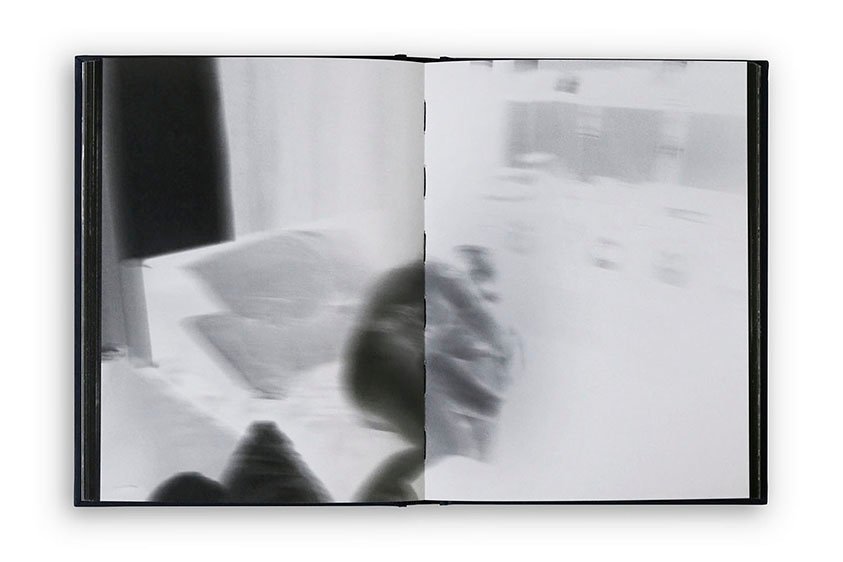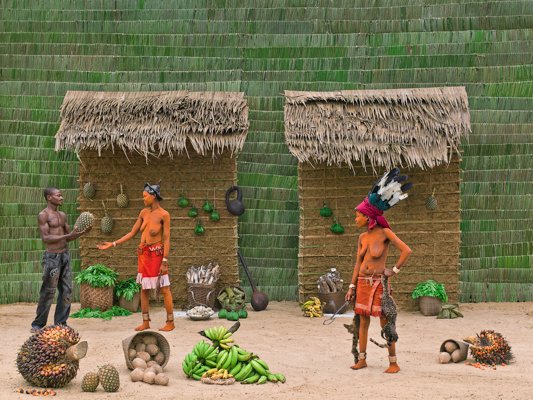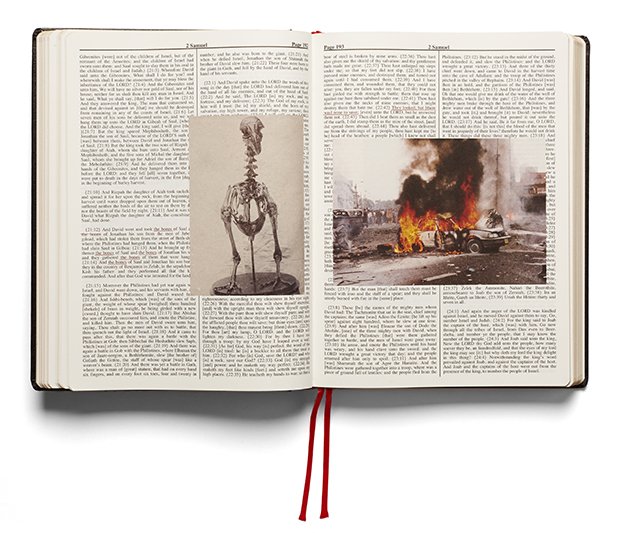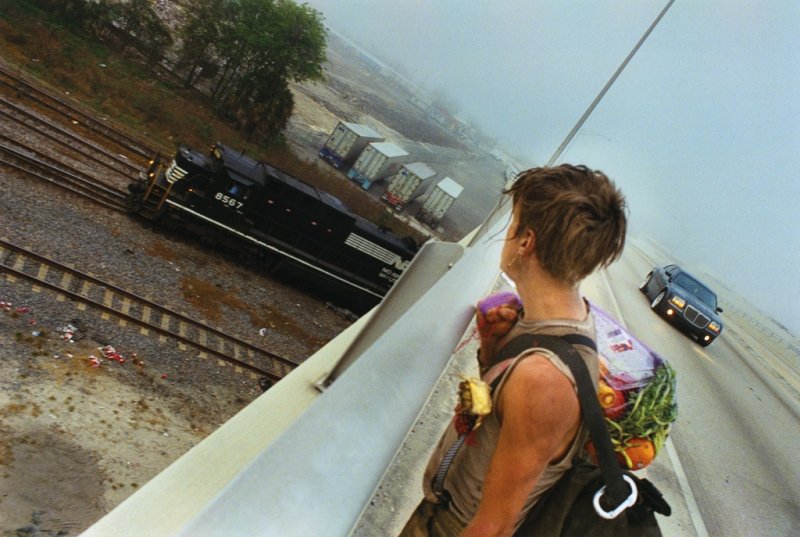Japan –
In an attempt to find new ways of communicating a story, Kosuke has recently produced the first issue of his self-published magazine Contact. Contact is a compilation of his contact sheets from any one photo-series, put together for the audience to gain more information about his story-making process, and experience, as a photographer. In a candid interview with EMAHO, Kosuke tells us more about Contact, its genesis and the current issue.
Tell us a little bit about Contact.
The idea came from organizing my negatives, my contact sheets and, of course, my room. I was looking at the contact sheets and I thought to myself: I published these stories, once or twice in magazines, online, and exhibitions. Then I felt, of course exhibitions are nice, posting in magazines is also nice but, basically, as time passes, the magazine will get old and no longer available. I have a website for showing the work but I wanted something that was more tangible.

Why contact sheets?
These tightly edited pictures, it’s the strongest way to tell a story but, at the same time, I wanted to give a little bit more information about the story, what came before and what after. It’s not just about showing the strongest picture. This way the audience can see how I think, follow the movement of my journey. They can actually travel with me.
Have you included all the contact sheets of this specific project or have you edited those contact sheets?
I edited those contact sheets but it also depends on the contact sheet. In some contact sheets there are no images, which is actually quite interesting. When I shoot one lot of film I pick only the quality pictures, so it’s best I pick contact sheets in which I also pick some photos for my stories. Always and foremost, the idea of a photo story for me is like guiding the audience to the story, to the story I experienced. Like when I was shooting I experienced something, I saw something but if I could just take it to people with me, that’s my idea of sharing a story.
What’s goes into process of making this?
I choose which contact sheets I want to put in the publication, then make photocopies of those contacts sheets at Sevel-Eleven. I buy a 100 yen (1 US dollar) notebook, and then I just put the contact sheets on the pages. On some pages I want to show some images in bigger size…I drew design and layout by pencil and then paste the contact sheet in the notbook, The dummy is finally done.

What were the difficulties you faced in the whole process?
Actually not much.
Really.
No …you know it was kind of very smooth.
Did you take help from other people or was it your idea and you just executed it on your own?
This was my idea. Actually when I made a dummy I showed it to my friends and I said, ‘Hey what do you think, do you think this is interesting?’ and friends said, ‘Oh yeah, yeah this is nice, just do it.’ I am sorry it’s not a very well thought out process but something came up to my mind and I just did it. I felt it’s actually not a bad way to publish my stories, to show it around, to let more people see it.

I get your point but these days there has been a lot of debate on self-publishing of photo books, so are you saying this could also become a new trend—that of self-publishing your own work in a magazine format?
I don’t know if it’s going to be a trend but I felt I wanted to do something interesting by myself. Let’s say, there are things you have to consider, like budget and how you distribute etc…but at the same time there is this freedom to tell your story that you shot….
And then there are stories that I shoot but which, for example, are not bold enough or there are not enough pictures to make a real life big thick book right? Also, sometimes a small story that I shoot, which is not going to be a book in itself. If you publish it somewhere then its like done, and in an exhibition it might stay one or two months at most, that’s good, but at the same time it doesn’t stay, right?
So you wanted to create something that stays for longer…
Yeah…..I am not too sure if this magazine format can stay long time but I’m sure that compared to weekly magazines, this certainly does…Though even if I sell everything it’s only going to reach 500 people… that is not many people.
So will it always be 500 or if it gets really popular will you be willing to increase the number?
Yes, sure, though only if I can recover the printing costs. For me 500 is a good number.
If it becomes really popular—I have been noticing that a lot of people have been very enthusiastic about it; you have been getting a lot of support from your friends and the fraternity—will it only be your work in future or you will also give a chance to other photographers, whose work can be published in Contact?
I am not very sure if other people want to do it.
Have you thought about this?
Wow, I am not sure because…. yeah I mean if everything is like a perfect situation then why not? For now I am just publishing by myself. This is an experiment and I am just trying to cover the cost of the printing because I want to do something interesting. But maybe, lets say I do CONTACT #1 and I do CONTACT #2, it might be the same design, might not be same design, anything’s possible.
Might be your work, might not be your work, is there a possibility?
I mean for now I don’t think so but if the condition allows then yes. Maybe some interesting people say they want to do it, why not. I don’t know if I have enough budgets to publish other people’s work though…

You have emphasized on telling a story with this format. How is it different from other magazines?
What you mean by this format?
Well, the emphasis on telling your own stories—that is the aim of photography, right? So how is it different when other photographers want to share their stories and their work gets published in other magazines and publications? So how is Contact different from that?
Magazine has many kinds of articles, and your picture is a part of the magazine. I think it is still very effective way to spread your story to the broader audience. Whereas CONTACT is just one story by itself; I am not putting it next to other stories, I am trying to tell just one story. From the beginning to the end, it’s just one story and I think the difference is that.
I am not sure that many of us, most of us photographers when you edit, let’s say, a portfolio with your story, people say you have to make it very tight, but at the same time, you would have been hiding some your successful pictures that cannot fit in the tight edit…and how the edit works differ from how you want to show. If it’s slideshow, exhibition or magazine or book etc…
In any medium what I want to do is to guide the audience into the story. And make them experience my journey, the people I met; it’s like introducing all those people to the audience. Also, for this I felt it is also good to show not just the best pictures, I pick the picture that I think is best but at same time they see more, they see the process of my story. Things like: what I saw next to these pictures, next to that moment, another scene, more pictures, other people, other scenes, how my actual vision moves. This is an attempt to seek another way to share the story if I share the process of making stories.
Why did you select your story ‘Any given Day’ for your first publication with Contact?
I felt the process was extremely interesting.

Why Colombia, why ‘Any Given Day’, because you have produced other stories also…
Yes, I was also thinking that maybe I’d do my story on China but Colombia it was in the end.
Tell me why Colombia. What’s the connection between Contact’s first edition and Colombia?
Kosuke: I have to say, the Colombia story, ‘Any given Day’–this one was, for me, one of the most successful stories that I have produced. I was constantly advancing with what I wanted to shoot; the whole vision was somehow very smooth. Of course, there were some difficulties along the way.
The China story is also one of the successful stories that I have done photographically. But then, these two were actually very different and opposite stories because when you see the contact sheet for Colombia, especially this story, you feel that somehow it’s very noisy. It’s like things are happening even in a calm situation, you can actually see the noise emerging from it.
These stories are polar opposites. Not because of the way I shot them, but mainly because of the story. Colombia is loud, kind of noisy—you can sense the vibrations but China is very calm. so I wanted to see how they look like if I make CONTACT book.
Let me show you the dummy. This here is a 100yen (1 US dollar) notebook.
(While showing the magazine) And this is the text…I also made a photocopy of my China story.

When was Colombia?
2010. While ‘Vanishing’ is 2007. It’s very different from Colombia.
I actually like this one.
China is calm while Colombia is loud.
And violent too…Can you share any one experience when you were working on Colombia on ‘Any given day’, any one experience that was interesting for you personally.
For me personally?

Yes, and if you could also just talk about that photograph also.
Okay, let me see. I have always liked this picture.
I have seen this picture. This is also on your website. If you could share the story behind that image and why is it so special for you?
This is a picture of mother of Goldo who is one of the gangsters. I met him because I visited his house. I began to go there even when this gangster was not there. I somehow became very close to his mother and his sister. His parents are very caring people. I spoke to her about her son, his life, when he is sick. She is very caring. But she also accepts the kind of situation the kids grew up in. She’d say: ‘It’s going to remain like this; I know what’s he doing but I can’t really do much’. She has accepted the situation for what it is. She raised her kids with care and love. And now her son is a gangster, he is also a hit man. Of course, she is worries for him. It’s her son and she is worried that her son will be killed one day for what he has done.
I don’t think it’s really a good thing to let them be like this, because this not a very happy situation. But people are living in that situation; they somehow accept it, let’s say they live one day at a time. This is where the title of this series– ‘Any given Day’—comes from. And of course their life continues, while you have your plan, your schedule ahead, but the way of life here is – a day and another day and another day. I mean they have a schedule, like ‘next week I have to do this’, but the mentality of the kind of life they lead is one day, then another. The whole story is like as I describe in the title.
What I do in China or Colombia is to put myself in one particular situation, in this case in this town.

After Colombia, China and Fukushima, what do you have in mind, because this has now become a publication and requires continuation. Will there be a point when your projects will come to an end? What next then? So if one edition is Colombia, another China, the third could be Fukushima, but what after the tenth edition?
After the tenth edition? That is a difficult question. Let’s see, I have this one now, next it’s going to be China. I have the design ready. But I was thinking on my way back home today that CONTACT #2 design could be different. There might be anther way to put the China picture together, like a contact sheet but a different design.
From this experiment, an idea that you had in your mind has actually come into reality. Is it a one-off or do you actually want to do it in continuation?
I want to do it in continuation. Mainly I am going to shoot more stories…

So really, you will be shooting for Contact?
Not exclusively for Contact but if I shoot some story, the story can be a part of Contact.
You still haven’t thought about it?
After China, I have another story in mind that I’d like to put in Contact.
Which one is that?
It’s is not on my website yet; I am not sure but maybe this one.

What is it about?
It is about the life in this place called Lenina in Transnistria. This can be in the very next Contact. I am going to shoot in this May/ June. You can actually see a slide show….
It’s like Moldova and Ukraine.
Oh yes, in between. It’s actually a part of Moldova.
Will Contact always be in b&w?
I am interested in shoot more color too, so may be in color too in the future.

I haven’t seen any of your colour work.
That’s because I shoot color mainly for assignments. Right now, CONTACT will be B&W. The original idea was to do things as I said. It’s not going to be a thick book because of the number of pictures. Like with Colombia, for example, if I put all the pictures of what I have done in Colombia it can be a book as well. ‘Any given day’ was not the only thing I shot there. I was thinking that one day I’d like to do a thicker book on Colombia.
Is there anything else you would want to share with us?
Let’s say, I want to make a thicker book someday with other Colombia stories, but making little publication like this is not only another way to tell the story but also it’s a good beginning to think about what makes this a bit more real. It’s a good experiment as well as the first step toward making a big book. Now I have more ideas for my real book after publishing CONTACT J I learnt a lot from makin CONTACT and it’s really interesting and exciting brain-activity to think about the idea to convey the stories to people.
Get your copy here – CONTACT
Interviewed by Manik Katyal

















